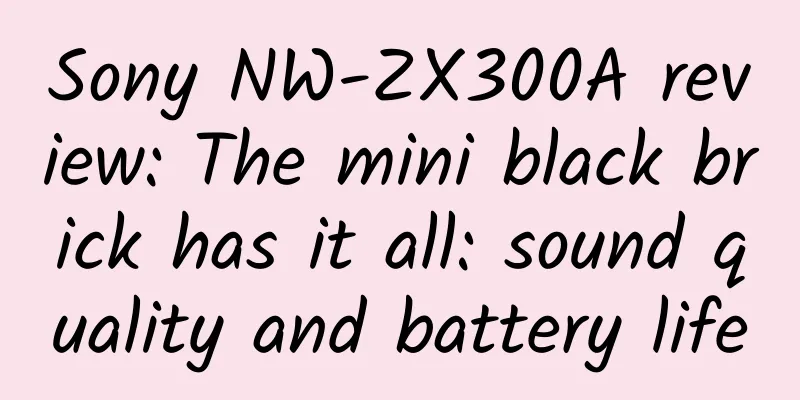The cold winter of mobile phone OEM factories has arrived: production lines only care about costs and not feelings

|
At the recent Smartisan T2 launch event, Luo's crosstalk was not as exciting as before, and it had a more tragic tone. When talking about supply chain issues, he used a wry smile to defuse the awkward atmosphere. After T2's OEM Zhongtianxin announced that it was unable to operate, although Luo Yonghao had joined forces with several other Zhongtianxin customers to pay money to help them tide over the difficulties, he still could not solve Zhongtianxin's internal financial problems. Later, Songri Digital, which succeeded Zhongtianxin, was also reported to have capital chain problems. Seeing this, you may ask, why doesn’t Lao Luo choose some large factories with good reputation? In the early stage of producing T1, Hammer chose Foxconn as the OEM. However, the wealthy Foxconn simply looked down on Hammer's order volume, which eventually led to major problems with the product's delivery date and quality control. Mobile phone OEM factories are heading for bankruptcy Recently, there have been many news reports about the mobile phone industry chain. In early 2015, Dongguan Zhaoxin Communication Company went bankrupt and its chairman Gao Min committed suicide. During the same period, Suzhou Honghui Technology, which produced Nokia mobile phone buttons, suffered losses because it could not keep up with the development of touch screen technology. On September 8, Shenzhen Hongkaixing Plastic Products Co., Ltd. issued an announcement announcing its bankruptcy. In October, Shenzhen Fuchang Electronic Technology Co., Ltd. ran out of funds, stopped production and gave up operations. For the mobile phone supply chain manufacturers that have been booming before, various problems have emerged when the growth rate of the mobile phone and related parts market has slowed down. So why is the mobile phone market, which seems to be booming, facing such a cold winter in the upstream industry chain? According to data released by the Ministry of Information Technology, China manufactured more than 1.6 billion mobile phones in 2015, a year-on-year increase of 2.9%. However, ironically, despite the surge in mobile phone production, China's smartphone shipments fell 8.2% year-on-year to 389 million units last year. Only 1,659 smartphone models were launched, a decrease of 27.5%. Making mobile phones is no longer profitable Various phenomena and data show that the Chinese mobile phone market is experiencing a cold winter. Since 2011, the wave of popularization of smart phones in China has been basically completed. The high, medium and low-end markets have been basically monopolized by major brands, and it is difficult to increase shipments. The reduction in shipments has brought great problems to OEM factories. The first is the reduction in production, which directly reduces the profits of OEM factories. In addition, the reduction in shipments has brought product backlogs to brand manufacturers. The backlog of mobile phone manufacturers' products has caused arrears in processing fees for OEM factories. In the early days of smartphone distribution, the sales of mobile phones were relatively comprehensive and the profits were relatively high. At that time, there were more mid-to-high-end models processed and assembled, which brought higher profit margins. In addition, some OEM manufacturers with design plans would make their own branded mobile phones. The temptation of high profits made OEM manufacturers blindly expand their production lines. The subsequent shift in the positioning of mobile phone sales, after a large number of cost-effective Internet manufacturers such as Xiaomi and LeTV entered the mobile phone market, the price of mobile phone terminals continued to drop, resulting in a significant drop in mobile phone profits, and the processing costs of OEM factories also decreased accordingly. Competition among foundries is fierce Due to the high profits in the early days of smartphone popularity, there were many OEM factories, and they all expanded blindly during development. After the profits were reduced, due to fierce competition, they could only continue to increase sales to maintain operations. The head of a certain OEM factory once said that due to fierce competition, in order to win orders in the later stage, profits are often compressed to the extreme. However, the money earned from this order is only enough to maintain the normal operation of the factory, and even after calculating the workers' wages, it is found that this order is still a loss. However, if the order is not accepted, it will lose more in order to maintain the machines and workers. So the question is, high-end mobile phones have such high profits and high sales volume. So why is the OEM market so bleak now? In addition to the current popular OEM production of mobile phones, in the traditional mobile phone manufacturing industry, the production of mobile phones is generally done by mobile phone brand manufacturers who build their own factories for processing and manufacturing. The advantage of doing so is to strengthen product quality control and ensure delivery time. Similar to old mobile phone manufacturers such as China Cool Union and even Samsung and Sony, their production is all in their own factories and they generally do not outsource to OEM factories for processing and production. In addition, mobile phone brands like Apple, which focus on mobile phone research and development, have relatively strict requirements for OEM factories. Generally, they only choose well-known OEM companies such as Foxconn. Most small and medium-sized OEM companies can only accept orders with meager profits. Judging from the current situation, the cold period of the mobile phone industry will continue for a long time. The mobile phone market is no longer as prosperous as it seems. Behind the emergence of new mobile phone brands, a large number of processing companies have closed down and gone bankrupt. When Zhongtianxin and other OEM factories broke out in financial crisis and lost their credit, various emerging manufacturers began to look for solutions. Manufacturers led by Xiaomi chose to invest in OEMs Longcheer and Wingtech to solve production capacity and supply problems; while LeTV and 360 chose to cooperate with some established mobile phone manufacturers such as Coolpad and use their production capacity for OEM production. At a time when the mobile phone industry is slowing down, it is becoming increasingly difficult for small and medium-sized OEMs to survive. As a winner of Toutiao's Qingyun Plan and Baijiahao's Bai+ Plan, the 2019 Baidu Digital Author of the Year, the Baijiahao's Most Popular Author in the Technology Field, the 2019 Sogou Technology and Culture Author, and the 2021 Baijiahao Quarterly Influential Creator, he has won many awards, including the 2013 Sohu Best Industry Media Person, the 2015 China New Media Entrepreneurship Competition Beijing Third Place, the 2015 Guangmang Experience Award, the 2015 China New Media Entrepreneurship Competition Finals Third Place, and the 2018 Baidu Dynamic Annual Powerful Celebrity. |
<<: Is God a programmer? Humans just live in code
Recommend
Analysis of iReader vs. WeChat Reading Products
Books are the ladder of human progress, but paper...
What if there is a black hole at the center of the sun? Astronomers are really studying it!
First of all, let me make it clear that this is n...
Xu Jiaxi from Unicorn Think Tank: In-depth report on the ventilator industry
Source: Unicorn Think Tank Source: Industrial Sec...
10 practical strategies for product promotion and acquisition!
When it comes to product operation , the main tas...
Case analysis: How to use selling point marketing for products?
The farthest distance in the world is not the dis...
EU Parliament accuses seven EU countries of intending to delay new emissions regulations
According to a recent report from the EU parliamen...
BAT is focusing on mini-apps. What should developers do when they are at the crossroads?
This is the best era, but also the worst era. Thi...
Companionship growth training camp
Companion Growth Training Camp Resource Introduct...
International Rabbit Day | Rabbits have red eyes? Do they love carrots? Actually…
The fourth Saturday of September every year is In...
Why is 2015 a breakthrough year for artificial intelligence?
Computers are "opening their eyes," say...
Google makes mistakes too: Four Android features that failed miserably
[[127442]] While the major features that Google p...
The latest gameplay guide for Tik Tok vlog bloggers!
Travel is becoming an indispensable part of peopl...
50 most useful open source mobile tools
[[126878]] [51CTO Translation] This article lists...
Case analysis of Toutiao information flow advertising
Based on our actual promotion situation, the effe...
Why does a black rhino have to hang upside down when it takes a flight? Can't it just lie flat?
Image source: Internet Classic brain teaser: How ...









